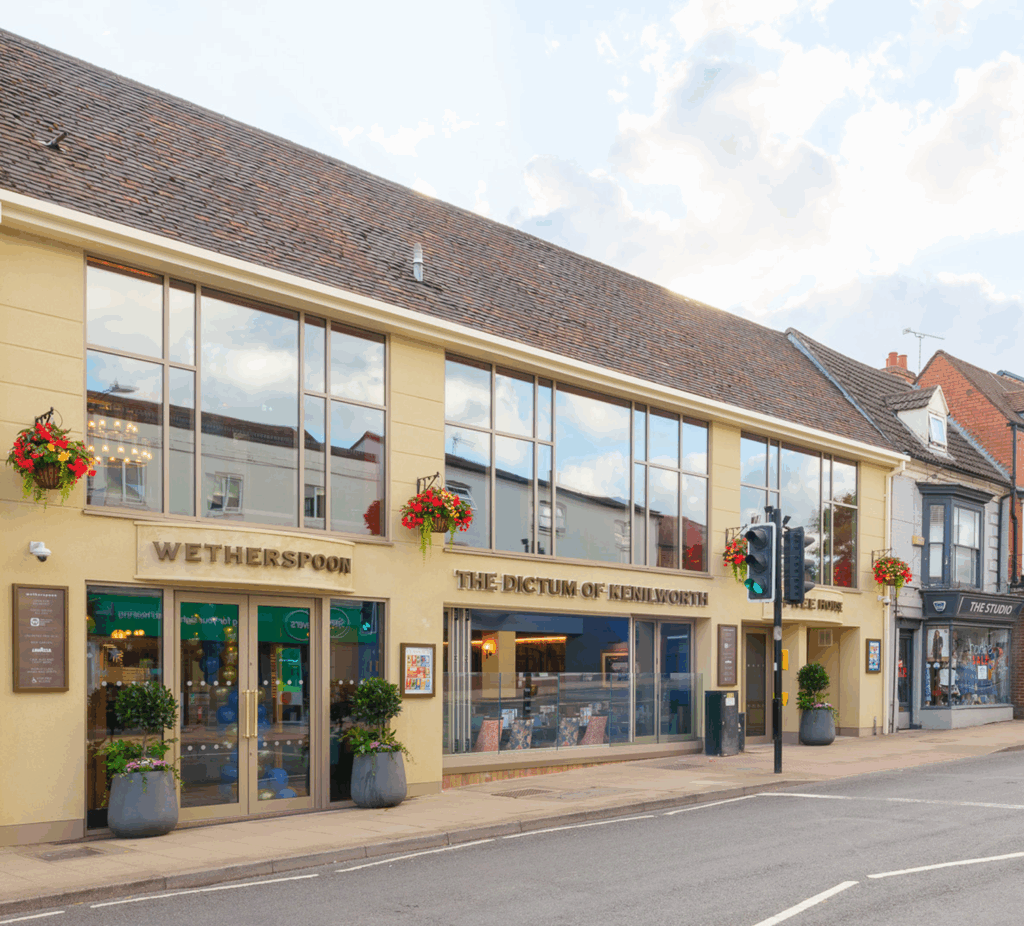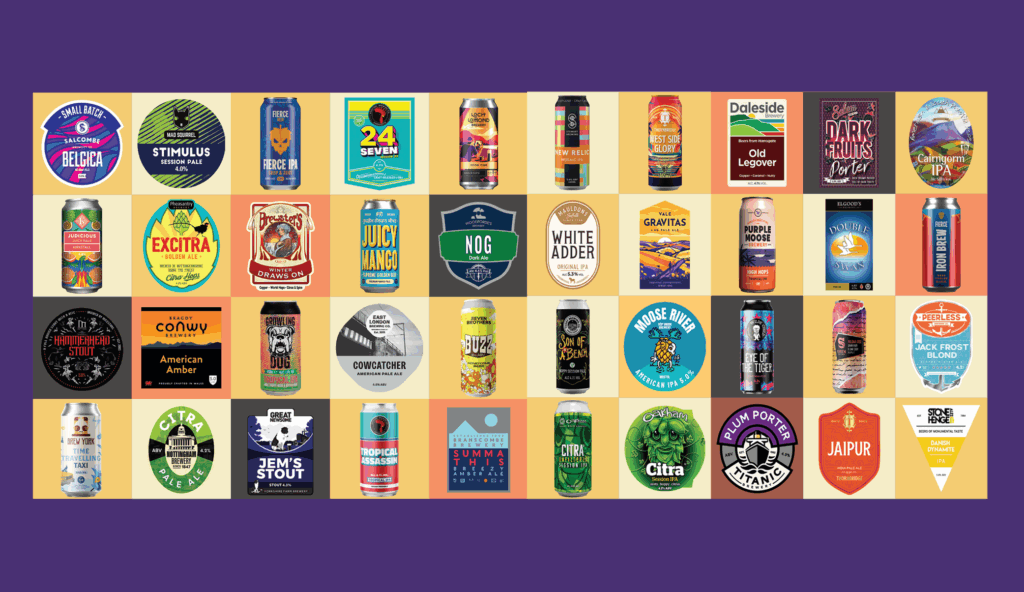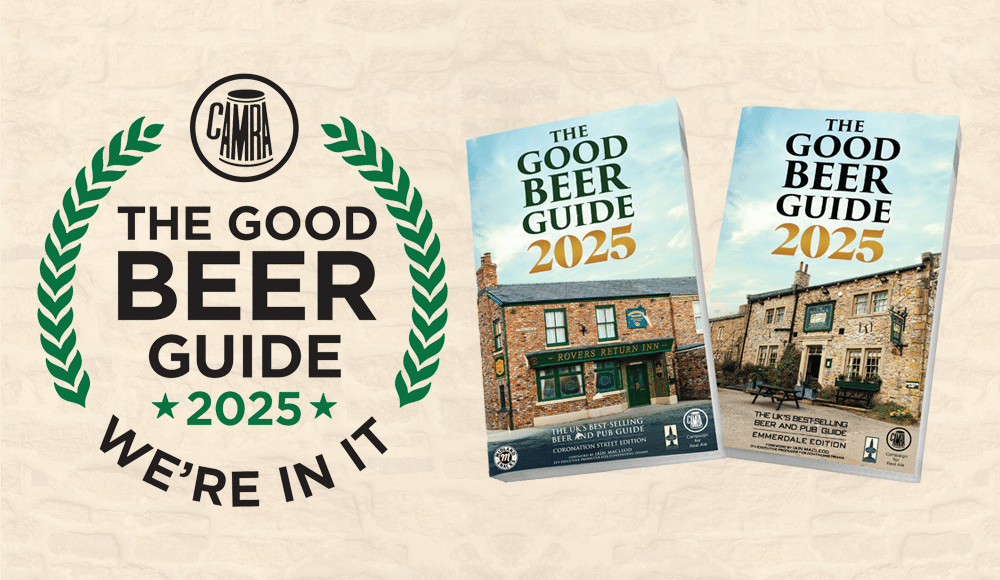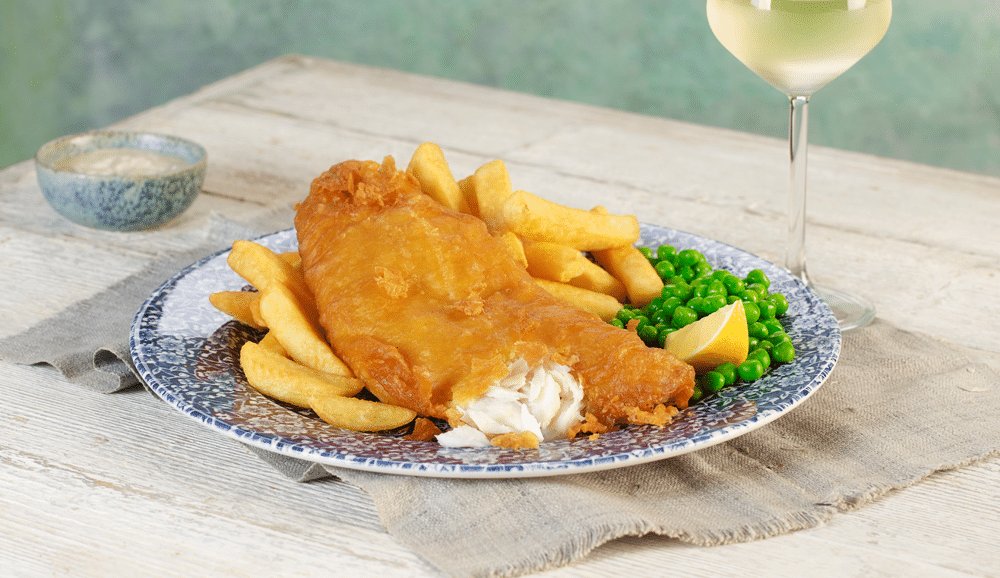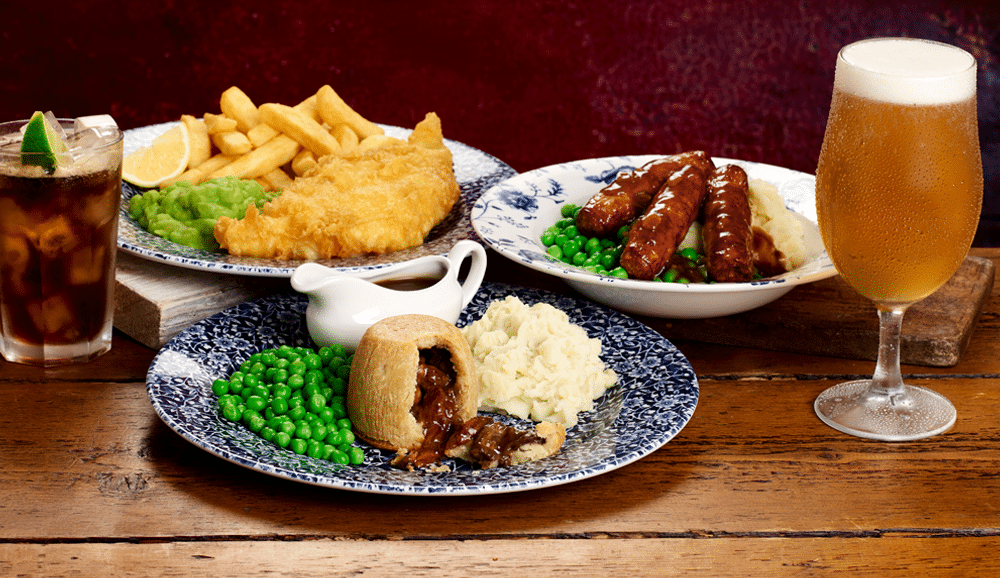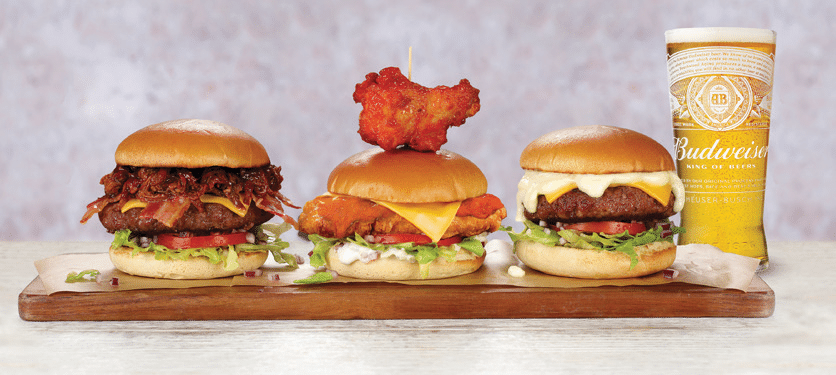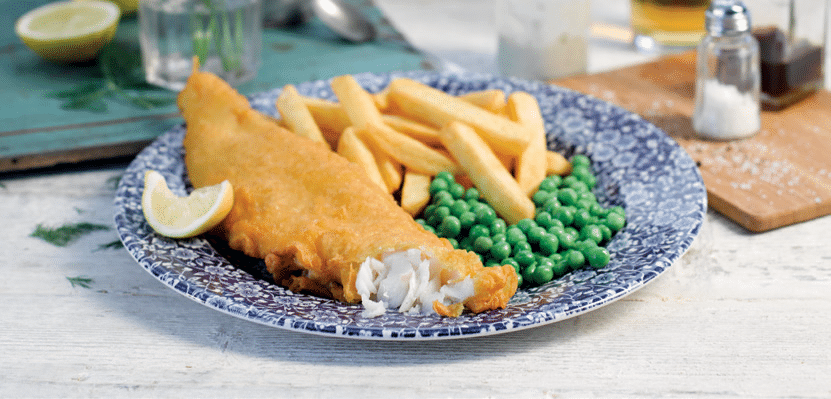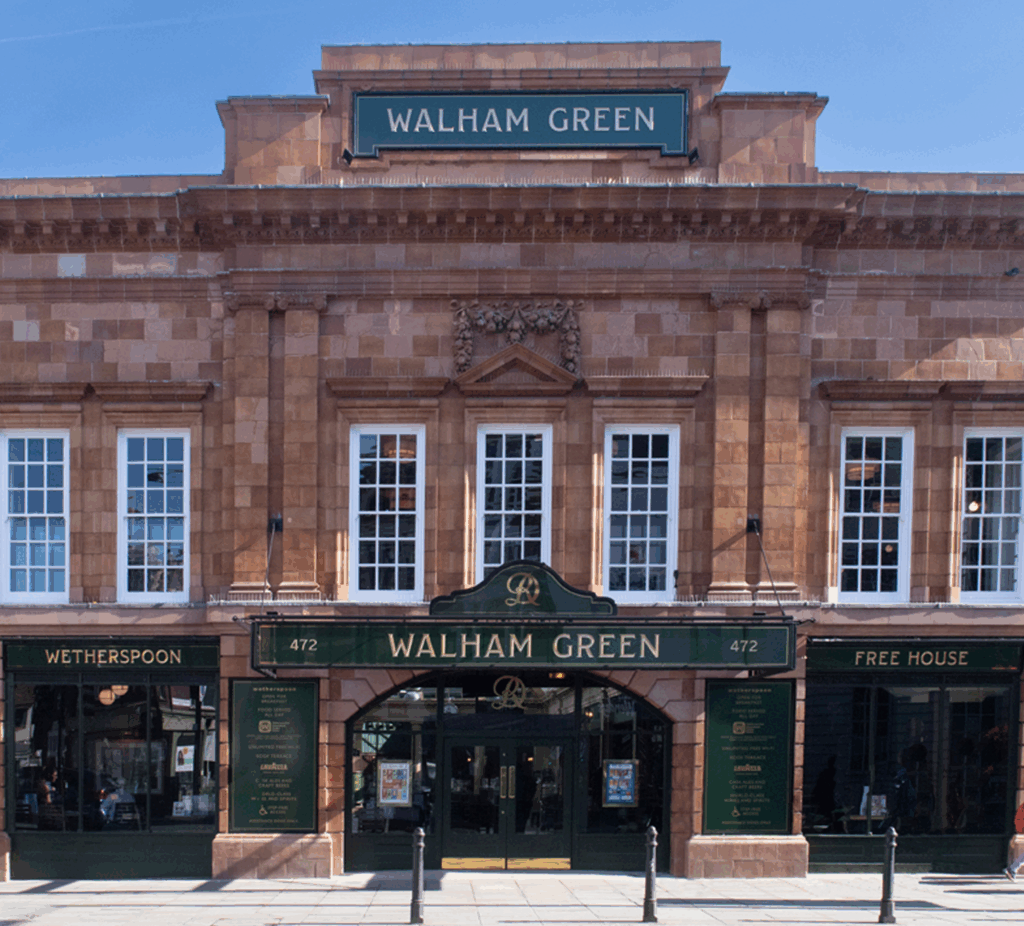
New openings
Wetherspoon continues to open new pubs.
Each pub has its own design, character and personality, based on local history.
Recognised for transforming old buildings into vibrant pubs, Wetherspoon has won numerous design awards.
OPENING SOON
The Angel Inn, Wetherby
New pub and beer garden
Opening: Tue 23 December
Address: 30 High Street, Wetherby, Yorkshire, LS22 6LT, United Kingdom
This well-known grade-II-listed building occupies a prominent town-centre location. Closed since 2022, it had been a restaurant and ice cream parlour for 13 years. Until then, it was The Angel pub. Photos from c1900 show that it was previously known as The Angel Hotel. In older drawings and on the 1824 map of Wetherby, it is The Angel Inn. During 1760–1840, it was the town’s leading coaching inn, where passengers stopped for refreshment and stagecoaches harnessed fresh teams of horses.
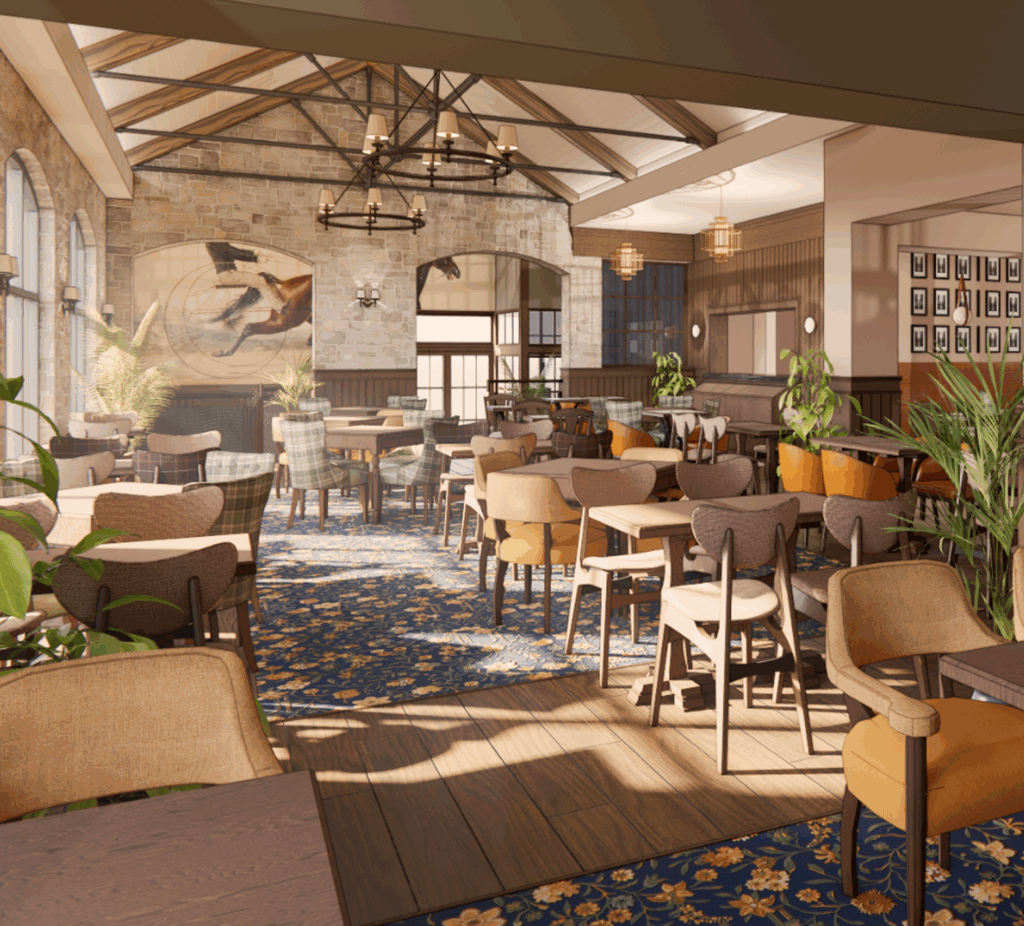
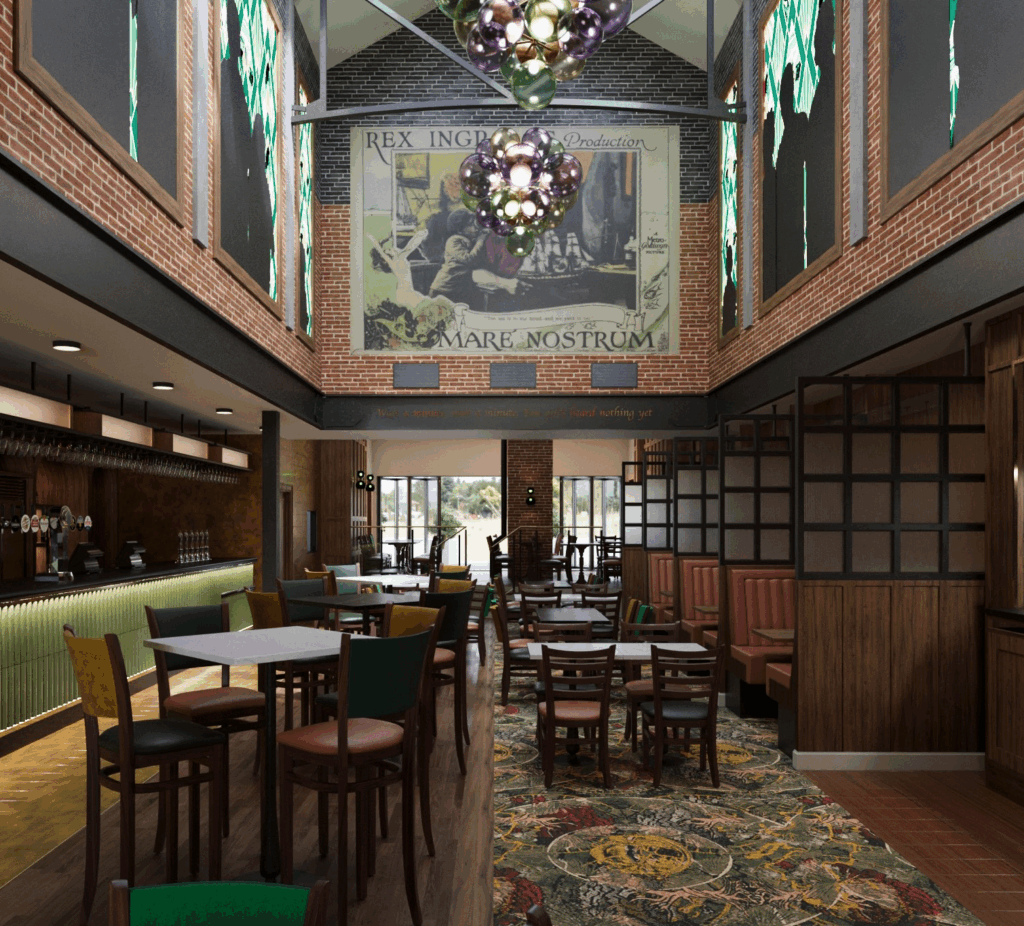
The Chiltern, Beaconsfield
New pub and beer garden
Opening: Tue 13 January
Address: 12 Station Road, Beaconsfield, HP9 1NL, United Kingdom
The first film shown at the 500-seat Picture House was a silent war film – Mare Nostrum, soon after which ‘talkies’ were introduced. In the mid 1950s, the cinema’s capacity was reduced to accommodate a new wide screen. In 1961, it was purchased by the local council and ‘extensively modernised’ soon afterwards. It was also renamed The Chiltern. The cinema closed its doors on 29 September 1989 for the last time, with the site sold five years later.
Castell de Santa Bàrbera, Alicante
New pub
Opening: February 2026
Address: Alicante-Elche Miguel Hernández Airport (airside departures, non-schengen zone), Alicante, Spain
This pub takes its name from Castell de Santa Bàrbera, a castle which sits overlooking the bay of Alicante, atop Mount Benacantil. Originating in the 9th century, it has served as a look-out, military fortress and prison. Designated in 1961 as a Site of Cultural Interest, it remains one of the city’s most significant historic landmarks.

OPEN NOW
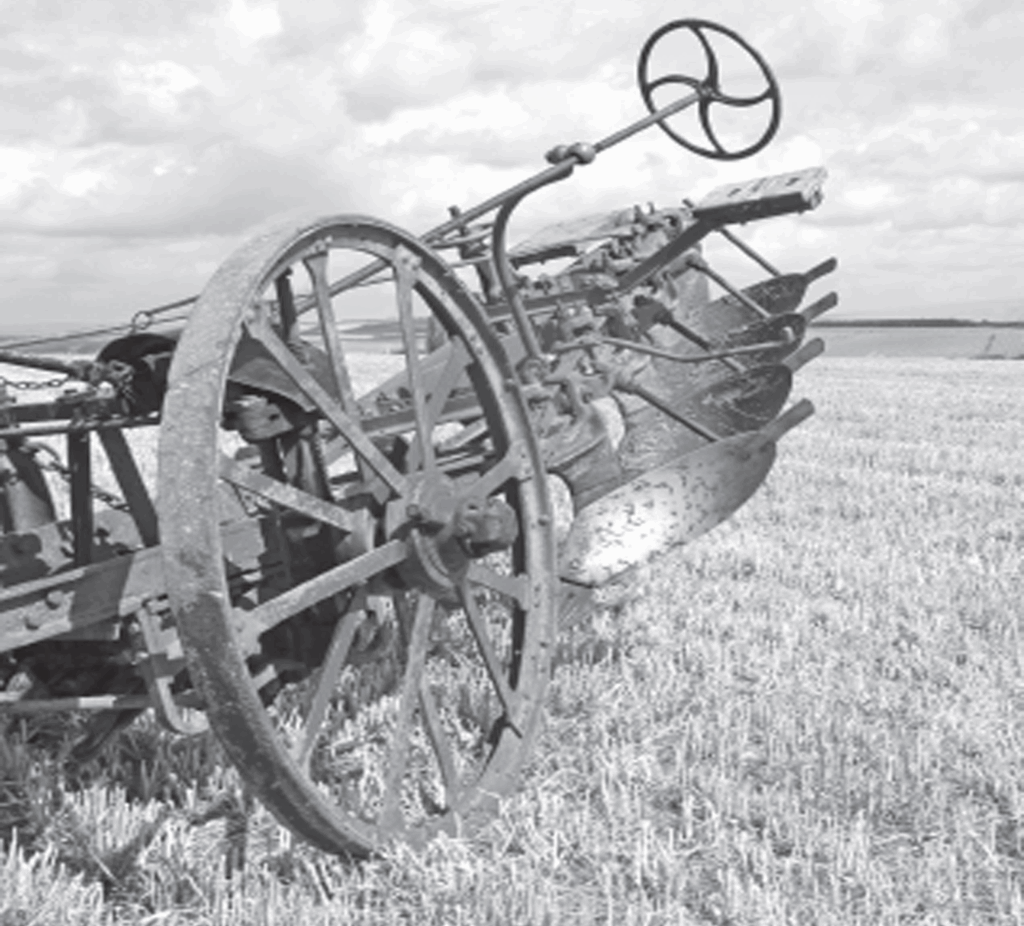
The Emersons Green, Bristol
New pub and beer garden – OPEN NOW
Address: 200-202 Westerleigh Rd, Emersons Green, Bristol, BS16 7AN, United Kingdom
The Emersons Green suburb was built on farmland, an area recorded on an 1830 map simply as Hows Moor. Starting as just a hamlet, long before South Gloucestershire existed, it has grown steadily into a residential Bristol suburb. For 88 years (until 2015), it was in the civil parish of Mangotsfield Rural (derived from Old English ‘Mangod’s Feld’ and mentioned in the Domesday Book (1086) as ‘Manegodesfelle’ and in 1377 as ‘Manegodesfeld’). The parish was renamed Emersons Green.
The Blue Bell, Holystone, Newcastle upon Tyne
New pub and beer garden – OPEN NOW
Address: Edmund Rd, Holystone, Newcastle upon Tyne NE27 0UN, United Kingdom
Nearby Backworth Colliery was actually a group of separate collieries sharing the Backworth name. The first shaft was sunk in 1813 at Backworth A pit. As well as B, C, D and E pits, there were also pits called the Blue Bell and the Prosperous. Both The Blue Bell pub and the Blue Bell railway crossing were named after the pit. The Backworth pits are all long gone, with the long-standing pub now converted into apartments.
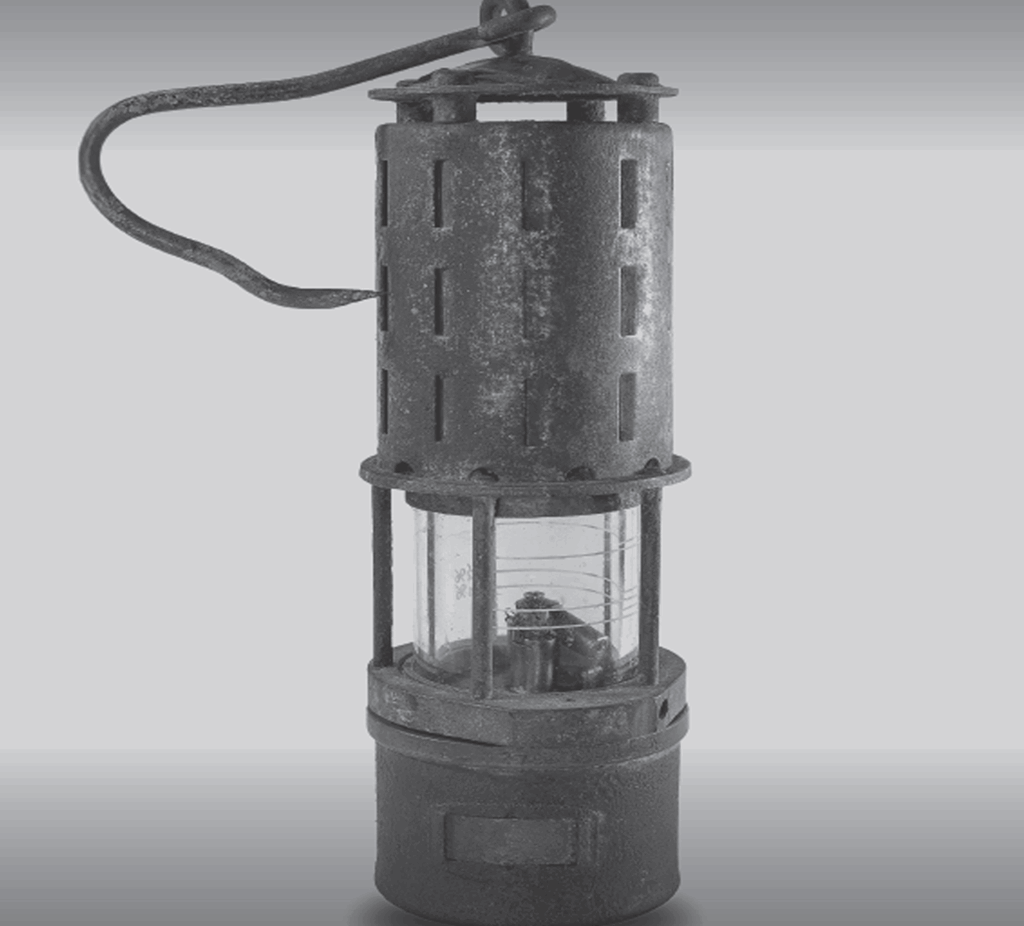
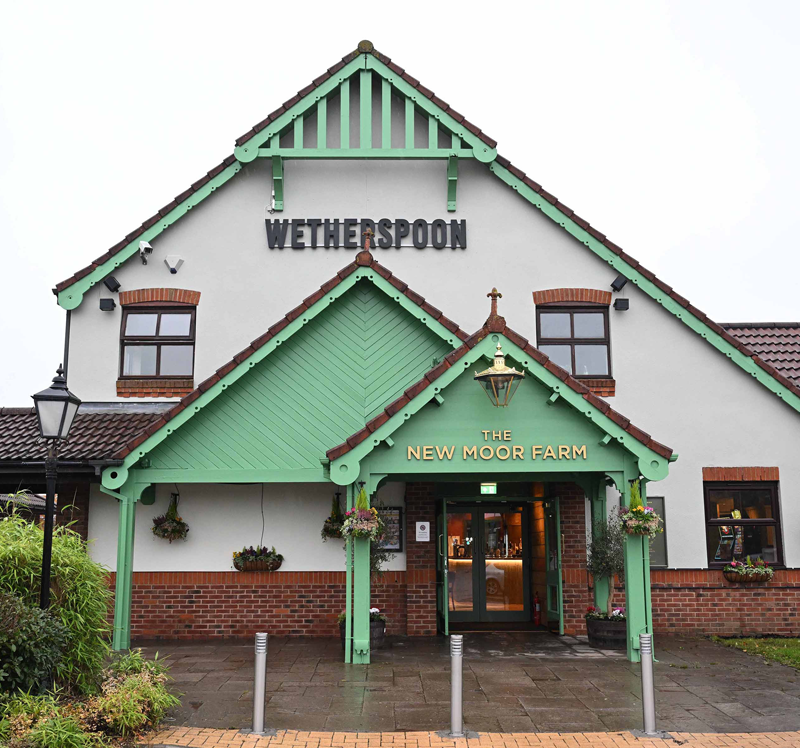
The New Moor Farm, Cramlington
New pub and beer garden – OPEN NOW
Address: Moor Farm, Annitsford, Cramlington, Tyne and Wear, NE23 7QA, United Kingdom
The land where this pub stands once formed the fields of Moor Farm. The farm was first recorded in 1769 on a map as ‘New Moor’ and on later maps as ‘Moor House’, ‘Cramlington Moor Farm’ and also ‘Moor Farm’. However, it had been abandoned by the late 1980s. In the early 2000s, the farmhouse and its outbuildings were redeveloped.
Sigered, King of Essex, Basildon
New pub and beer garden OPEN NOW
Address: 8–10 East Walk, Basildon, SS14 1HG, United Kingdom
As a place name, Basildon’s origin is Saxon, meaning ‘Beorthel’s Hill’. During the 7th century, the area was part of the Kingdom of the East Saxons – now referred to as the Kingdom of Essex. It was then one of the seven Anglo-Saxon kingdoms of England. During c604–616, it was ruled by Sebert, thought to have been buried at Great Burstead, now part of the Basildon district. The last King of Essex was Sigered, reigning during 798–825.
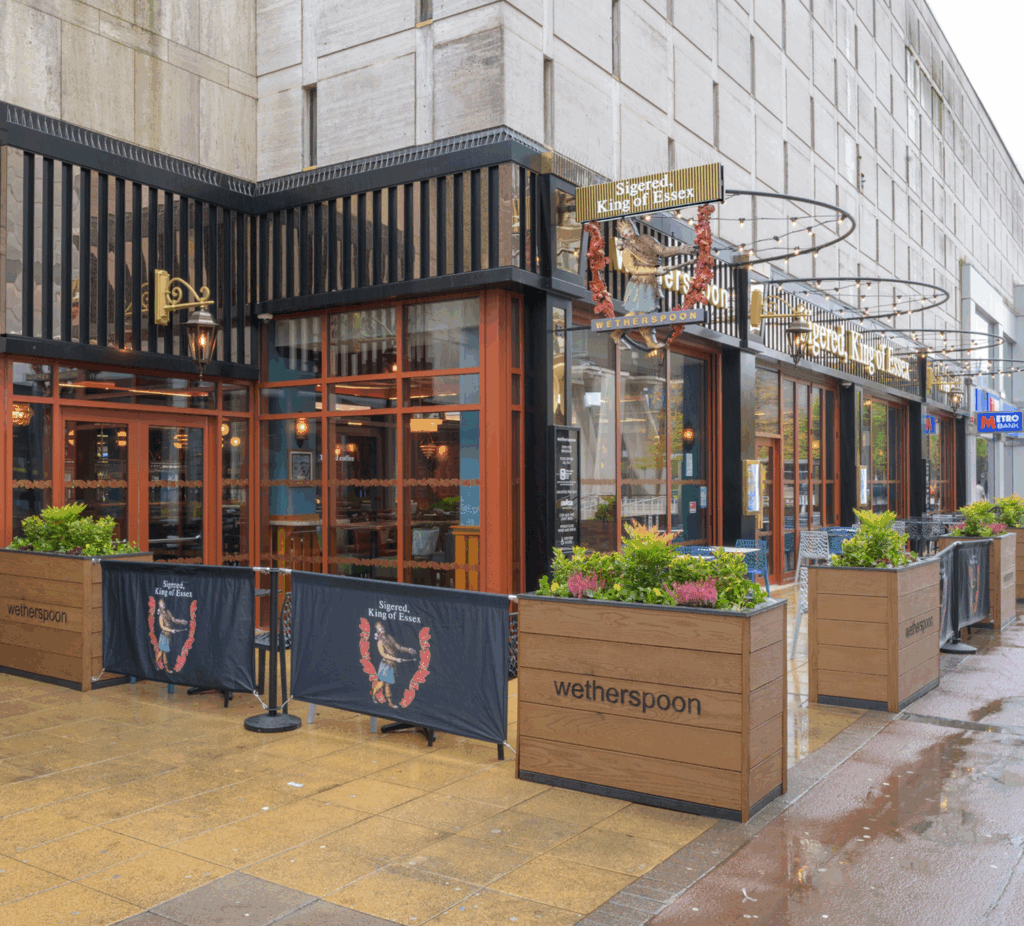
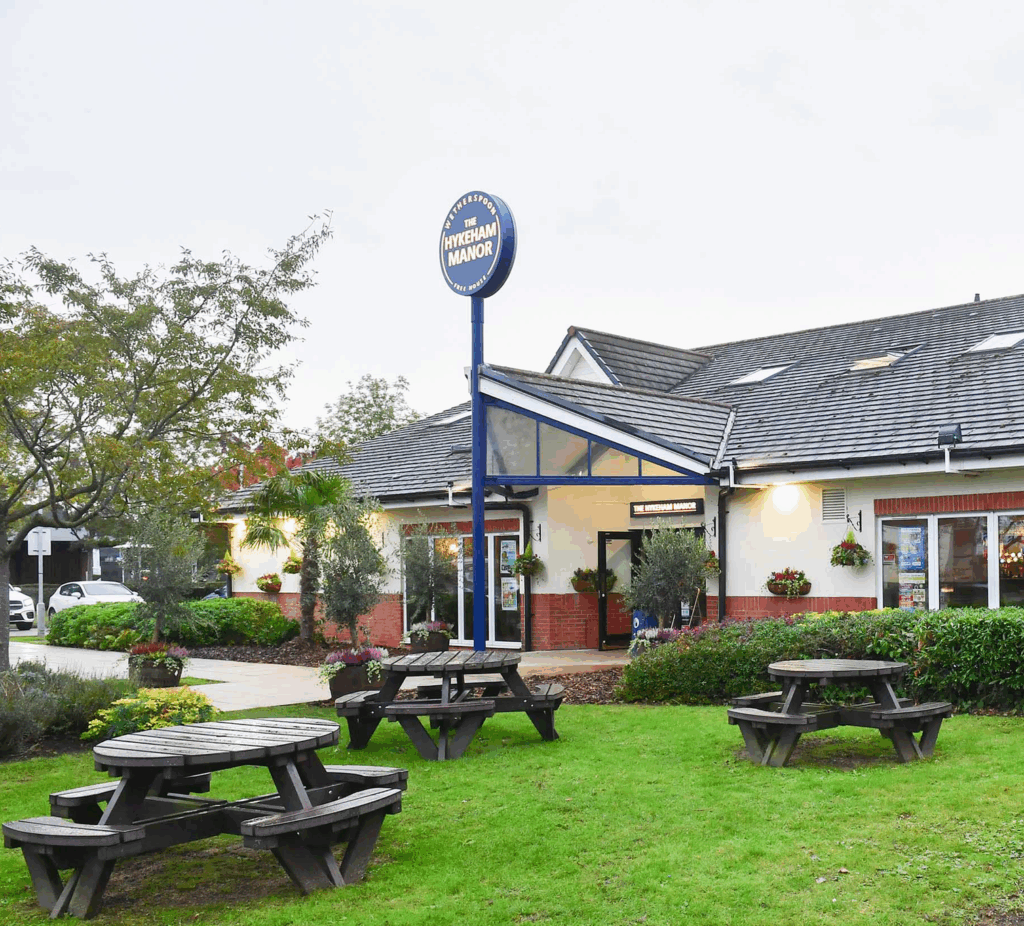
The Hykeham Manor, Lincoln
New pub and beer garden – OPEN NOW
Address: Gateway Park, Roman Way, Newark Road, Lincoln, LN6 9UH, United Kingdom
This pub’s name refers to a once-well-known local building. North Hykeham’s two entries in the Domesday Book are the manor (estate) held by Count Alan of Brittany and the much more recent Hykeham Hall (or Hykeham Manor House) – a large house on Newark Road, set in its own grounds. Originally ‘The Grange’, it was built in 1822 by landowner Richard Ellis. It was demolished in the 1960s, followed a few years later by its outbuildings – Barns Cottage, Hall Cottage and The Lodge.
The Sir Alexander Fleming, Paddington
New pub and beer garden – OPEN NOW
Address: Unit 53, 5 Merchant Square, Paddington Basin, London, W2 1AS5, United Kingdom
Five minute’s walk from Paddington station.
Queen Mary’s Hospital, near Merchant Square is where the eminent physician Sir Alexander Fleming ‘discovered’ Penicillin. 5 Merchant Square rises high above Paddington Basin, which was built as the terminus of the Grand Junction Canal. The new waterway opened for traffic, in 1801, with the waving of flags, ringing of bells and the firing of canons. The canal brought goods in bulk from the industrial Midlands to what was then the edge of the capital, from where they were also exported.
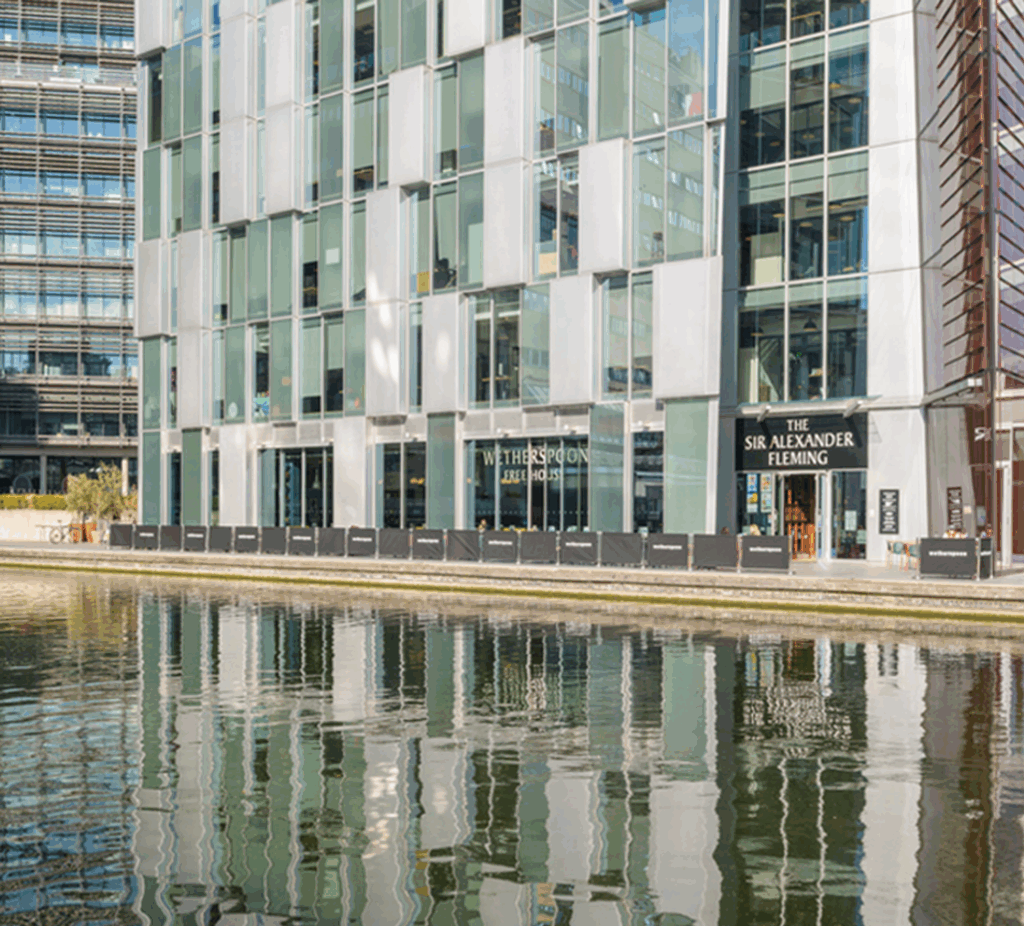

Walham Green, Fulham
New pub and roof terrace – OPEN NOW
Address: 472 Fulham Road, Hammersmith & Fulham, SW6 1BY, United Kingdom
Next to Fulham Broadway station‘s entrance
This distinctive property comprises the grade II listed former entrance building and ticket hall of Fulham Broadway tube station. Designed by the railway company architect Harry W Ford, the Edwardian baroque-style entrance was built in 1910 on the site of the original station entrance, which first opened on 1 March 1880. The station was called Walham Green, after the village which occupied what is now Fulham Broadway. Over 70 years later (in 1952), the name was changed to Fulham Broadway.
The Dictum of Kenilworth, Kenilworth
New pub and beer garden – OPEN NOW
Address: 18–24 The Square, Kenilworth, CV8 1EB, United Kingdom
On 31 October 1266, a pronouncement was issued (Dictum de Kenilworth) to reconcile the rebels of the Second Barons’ War with the royal government of England. After the baronial victory at the Battle of Lewes (1264), Simon de Montfort had taken control of the royal government, but was later killed at the Battle of Evesham (1265), with Henry III restored to power. However, a group of rebels, whose resistance proved difficult to crush, held out in the stronghold of Kenilworth Castle.
